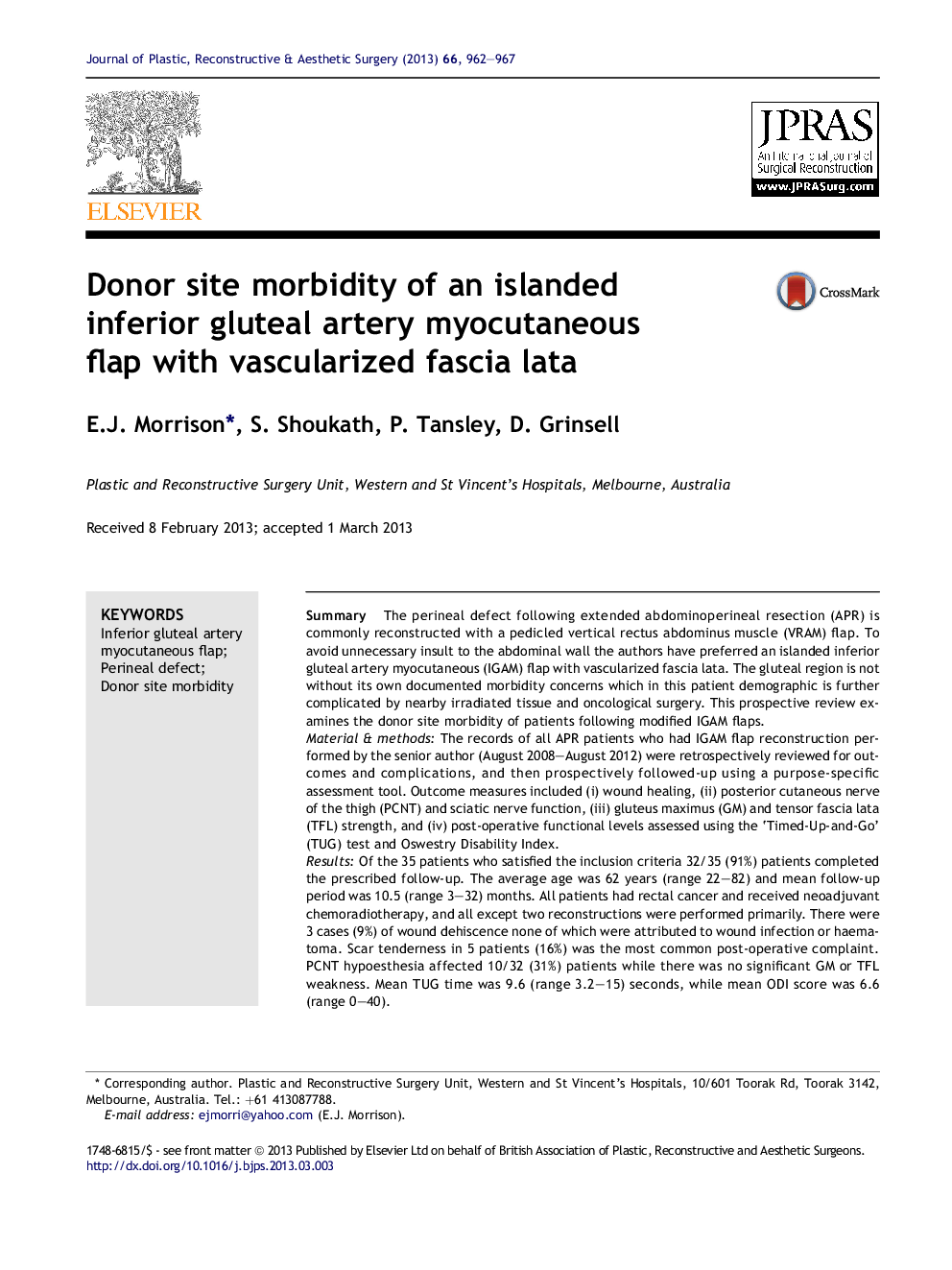| کد مقاله | کد نشریه | سال انتشار | مقاله انگلیسی | نسخه تمام متن |
|---|---|---|---|---|
| 4118642 | 1270336 | 2013 | 6 صفحه PDF | دانلود رایگان |

SummaryThe perineal defect following extended abdominoperineal resection (APR) is commonly reconstructed with a pedicled vertical rectus abdominus muscle (VRAM) flap. To avoid unnecessary insult to the abdominal wall the authors have preferred an islanded inferior gluteal artery myocutaneous (IGAM) flap with vascularized fascia lata. The gluteal region is not without its own documented morbidity concerns which in this patient demographic is further complicated by nearby irradiated tissue and oncological surgery. This prospective review examines the donor site morbidity of patients following modified IGAM flaps.Material & methodsThe records of all APR patients who had IGAM flap reconstruction performed by the senior author (August 2008–August 2012) were retrospectively reviewed for outcomes and complications, and then prospectively followed-up using a purpose-specific assessment tool. Outcome measures included (i) wound healing, (ii) posterior cutaneous nerve of the thigh (PCNT) and sciatic nerve function, (iii) gluteus maximus (GM) and tensor fascia lata (TFL) strength, and (iv) post-operative functional levels assessed using the ‘Timed-Up-and-Go’ (TUG) test and Oswestry Disability Index.ResultsOf the 35 patients who satisfied the inclusion criteria 32/35 (91%) patients completed the prescribed follow-up. The average age was 62 years (range 22–82) and mean follow-up period was 10.5 (range 3–32) months. All patients had rectal cancer and received neoadjuvant chemoradiotherapy, and all except two reconstructions were performed primarily. There were 3 cases (9%) of wound dehiscence none of which were attributed to wound infection or haematoma. Scar tenderness in 5 patients (16%) was the most common post-operative complaint. PCNT hypoesthesia affected 10/32 (31%) patients while there was no significant GM or TFL weakness. Mean TUG time was 9.6 (range 3.2–15) seconds, while mean ODI score was 6.6 (range 0–40).ConclusionsIn spite of challenging circumstances the IGAM flap can provide appropriate wound coverage with surprisingly little donor site morbidity contrary to previous reports.
Journal: Journal of Plastic, Reconstructive & Aesthetic Surgery - Volume 66, Issue 7, July 2013, Pages 962–967